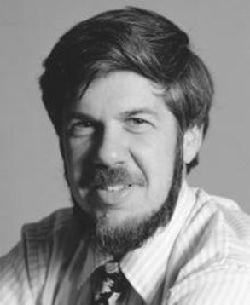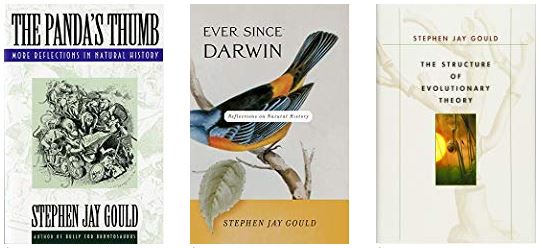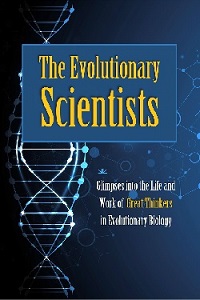|
TRANSLATE THIS ARTICLE
Integral World: Exploring Theories of Everything
An independent forum for a critical discussion of the integral philosophy of Ken Wilber
 David Christopher Lane, Ph.D.
Professor of Philosophy, Mt. San Antonio College Lecturer in Religious Studies, California State University, Long Beach Author of Exposing Cults: When the Skeptical Mind Confronts the Mystical (New York and London: Garland Publishers, 1994) and The Radhasoami Tradition: A Critical History of Guru Succession (New York and London: Garland Publishers, 1992). David Christopher Lane, Ph.D.
Professor of Philosophy, Mt. San Antonio College Lecturer in Religious Studies, California State University, Long Beach Author of Exposing Cults: When the Skeptical Mind Confronts the Mystical (New York and London: Garland Publishers, 1994) and The Radhasoami Tradition: A Critical History of Guru Succession (New York and London: Garland Publishers, 1992).If there's a singular topic Integral students need to be educated on it is evolutionary theory, given their frequent but uninformed use of the term "evolution". These short biographical chapters about evolutionary theorists have been written by different philosophy students of professor David Christopher Lane. (FV)
THE EVOLUTIONARY SCIENTISTS
Glimpses into the Life and Work of Great Thinkers in Evolutionary Biology
Coyne|
Crick|
Darwin|
Dawkins|
Diamond|
Dobzhansky|
Eldridge|
Gould|
Haldane|
Hamilton |
Lamarck|
Lovelock|
Mayr|
Mendel|
Monod|
Spencer|
Trivers |
Wallace |
Weismann |
Williams |
E.O. Wilson
Stephen Jay GouldDiana HernandezStephen Jay Gould was a world-renowned scientist and revered evolutionary theorist. He was a man of many parts, yet was most famously known as an American paleontologist and historian of science. Gould spent the better part of his teaching career at Harvard University. Throughout his career, he remained a productive scholar who consistently published books, articles, essays, and reviews. He was undeniably one of the most influential authors of popular science of his generation. Gould's most compelling contribution to evolutionary theory was the theory of punctuated equilibrium; it was developed in 1972 alongside fellow paleontologist Niles Eldredge. The theory proposes that rather than being steady and gradual, evolution is defined by long periods of stability, which is infrequently punctuated by swift periods of cladogenesis. Gould's empirical research was largely based on land snails—Cerion and Poecilozonites. He was the leading light in the world of snail genetics. Gould established popularity among the general public through his essays in Natural History magazine. Carol Kaesuk Yoon of the New York Times stated that Gould is “perhaps the best known (evolutionary biologist) since Darwin.” Needless to say, he was revered and reviled by colleagues, making him the object of both admiration and jealousy.  Stephen Jay Gould Gould was born on the 10th of September 1941 to Leonard and Eleanor Gould. Leonard was a World War II veteran, a left-wing activist with an interest in natural history and a court stenographer for a living. Eleanor was an artist and entrepreneur whose parents were Hungarian immigrants. In the final essay of his 27-year series in Natural History magazine, Gould recalled his grandparents “who rose from poverty to solvency as garment worker(s)” in the streets of New York. Gould and his younger brother, Peter were raised in the middle-class neighborhood of Bayside in Queens. On one fateful day, Leonard's passion for natural history led him and his son to the American Museum of Natural History. It was here—in the Hall of Dinosaurs—where Gould first laid eyes upon a Tyrannosaurus rex. Unbeknownst to him, this interaction would single-handedly change the course of his entire life. From this moment on Gould knew he would spend the rest of his life studying fossils. Gould's interest in paleontology never ceased and decidedly grew from a passion into a career. Gould double-majored in geology and philosophy and earned an AB from Ohio-based Antioch College in 1963. During his time here, Gould studied abroad at the University of Leeds in England. It was here that he led demonstrations week after week outside of the largest dancehall in Britain—the Mecca Locarno ballroom in Bradford—for refusing to admit black people. After his undergraduate studies, Gould returned to New York to study evolutionary biology and paleontology at Columbia University. Under the guidance of Norman Newell, he graduated in 1967 with a doctorate in paleontology. Upon completion of his graduate work, he was promptly hired by Harvard University where he worked until the end of his lifetime. While at Harvard, Gould established his teaching reputation; he was one of the university's most visible and engaging instructors. The subjects he taught ranged from biology, geology, history of science and paleontology. Six shorts years later, in 1973 he was promoted to professor of geology and curator of invertebrate paleontology in the Harvard Museum of Comparative Zoology. By 1982 the university named him the Alexander Agassiz Professor of Zoology. In 1983, Gould was awarded a fellowship at the American Association for the Advancement of Science where he later served as president (1999-2001). Gould's research focused primarily on invertebrate paleontology, namely the form and growth of land snails. During 1985-1986 he served as president of the Paleontological Society and later as president of the Society for the Study of Evolution (1990-1991). He was no stranger to being bestowed honors; in 1975 he was earned the Schuchert Award for excellence in paleontological research for a paleontologist under the age of 40. In 1989 he was elected into the National Academy of Sciences. In 1996, he was hired as the Visiting Research Professor of Biology at New York University. By 2001, he had been named Humanist of the Year by the American Humanist Association for his lifetime's work. In 2008, after his death—May 20, 2002—he was awarded the Darwin-Wallace Medal. Previously, this medal had been awarded only once every half-century. Similar to Darwin, he was most celebrated for his interpretation of facts acquired by others, not for his own research. Though Gould coined the term “punctuated equilibria,” it was Niles Eldredge who first presented the theory of punctuated equilibrium in his graduate studies. During an interview with the Academy of Achievement Gould said, “Punctuated equilibrium argues a geological perspective. Evolutionary change is concentrated in geologically sudden—but actually slow by the scale of our lives—bursts of speciation, and then stability's the norm for species in-between.” He argued that the implications that followed for evolutionary theory differed from traditional views, including “the idea that evolutionary trends are not pushing a ball up an inclined plane by slow and steady and continuous adaptations.” He likened it to climbing a staircase, stating “the reasons why you take a lateral step on the staircase are very different from why you slowly and steadily push the ball up.” The landmark paper “Punctuated Equilibria” published in 1972 was established upon I. Michael Lerner's theories of developmental and genetic homeostasis and Ernst Mayr's interpretation of geographic speciation. Phyletic gradualism is regularly contrasted against the theory. In the famous original essay by Gould and Eldredge, phyletic gradualism is defined as “a model of evolution which theorizes that most speciation is slow, uniform and gradual.” In this mode of evolution, through a process called anagenesis, an entire species steadily transforms into a new species. There is no evidence of a clear distinction between a descendant and ancestral species unless cladogenesis occurs. The theory of punctuated equilibrium suggests that the Darwinian degree of gradualism is practically unsubstantial in the fossil record. It argues that lack of motion, or stasis, influences the history of nearly all fossil species. In his book, The Structure of Evolutionary Theory, Gould stated that his theory amended a key pillar “in the central logic of [the] Darwinian theory.” Criticisms from the evolutionary biology community assert that the theory offers only modification to Neo-Darwinism. Fellow evolutionary biologist Richard Dawkins believes that the gaps in the fossil record are not to be attributed to evolutionary but rather migratory events. In his book, The Blind Watchmaker, Dawkins highlights that punctuated equilibrium has been “oversold by some journalists.” He asserts that the thesis “does not deserve a particularly large measure of publicity.” He described it as an “interesting but minor wrinkle on the surface of Neo-Darwinian theory.” To his credit, in his book, The Extended Phenotype (1982), he stated the theory was “of great interest to biology.” Stephen Jay Gould was outspoken and controversial and his work on evolutionary theory was groundbreaking. His award-winning publications expanded the world of science to thousands of readers. The catalog of his work—spanning from 1965 to 2000—includes 22 books, 101 major book reviews, 300 essays, and 479 peer-reviews papers. He was a prolific writer and a rare figure to been canonized as a “Living Legend” by the Library of Congress. Richard Lewontin, friend and colleague of Gould's for 25 years, said the following of him: “He was very creative and original in his studies of evolution… an expert at taking new discoveries and applying them to an understanding of evolution… [he] had a good feeling for the complexity and variation involved in evolution. Secondly, he was the best science writer for the public when it came to explaining evolution. Steve did not try to make it simple, he tried and succeeded in explaining the complications.” Gould was respected and admired by the masses, his influence was far and wide-reaching and his contributions to our understanding of evolutionary biology and paleontology are likely to withstand the test of time.
“Nothing is more dangerous than a dogmatic worldview—nothing more constraining, more blinding to innovation, more destructive of openness to novelty.”—Stephen Jay Gould
Further Reading1. Ever Since Darwin: Reflections in Natural History, W. W. Norton & Company (July 17, 1992) 2. The Structure of Evolutionary Theory, Belknap Press: An Imprint of Harvard University Press; 1 edition (March 21, 2002) 3. The Panda's Thumb, W. W. Norton & Company; Reissue edition (August 17, 1992)  MSAC Philosophy Group
The theory of evolution has a long history. However, it was not until Charles Darwin and Alfred Russel Wallace discovered that the wide variety of species we presently see were largely the result of natural selection did evolutionary studies have a solid, scientific basis. In the past one hundred and sixty years, a number of eminent biologists have contributed to our understanding of how complex life forms emerged from simpler, more rudimentary ones.
Comment Form is loading comments...
|